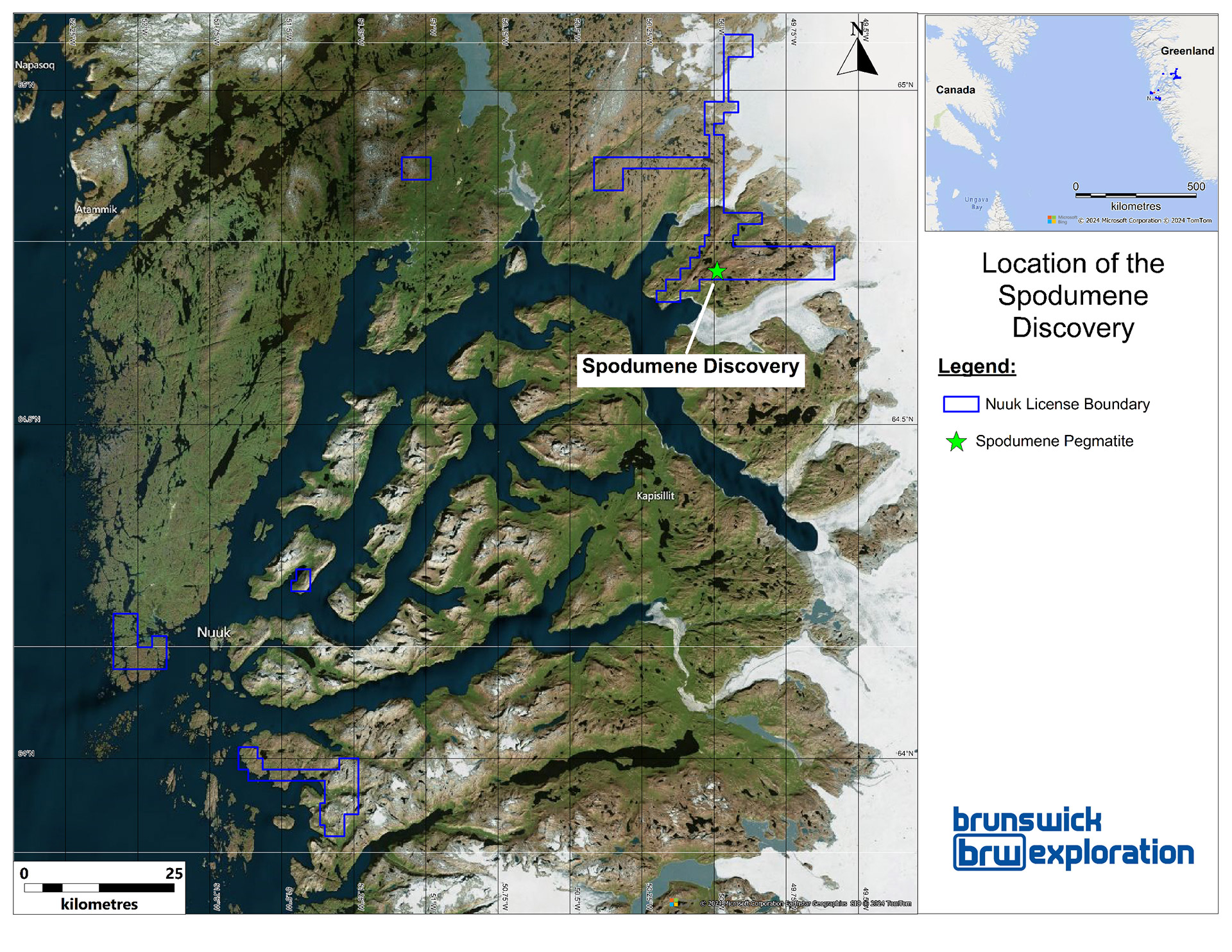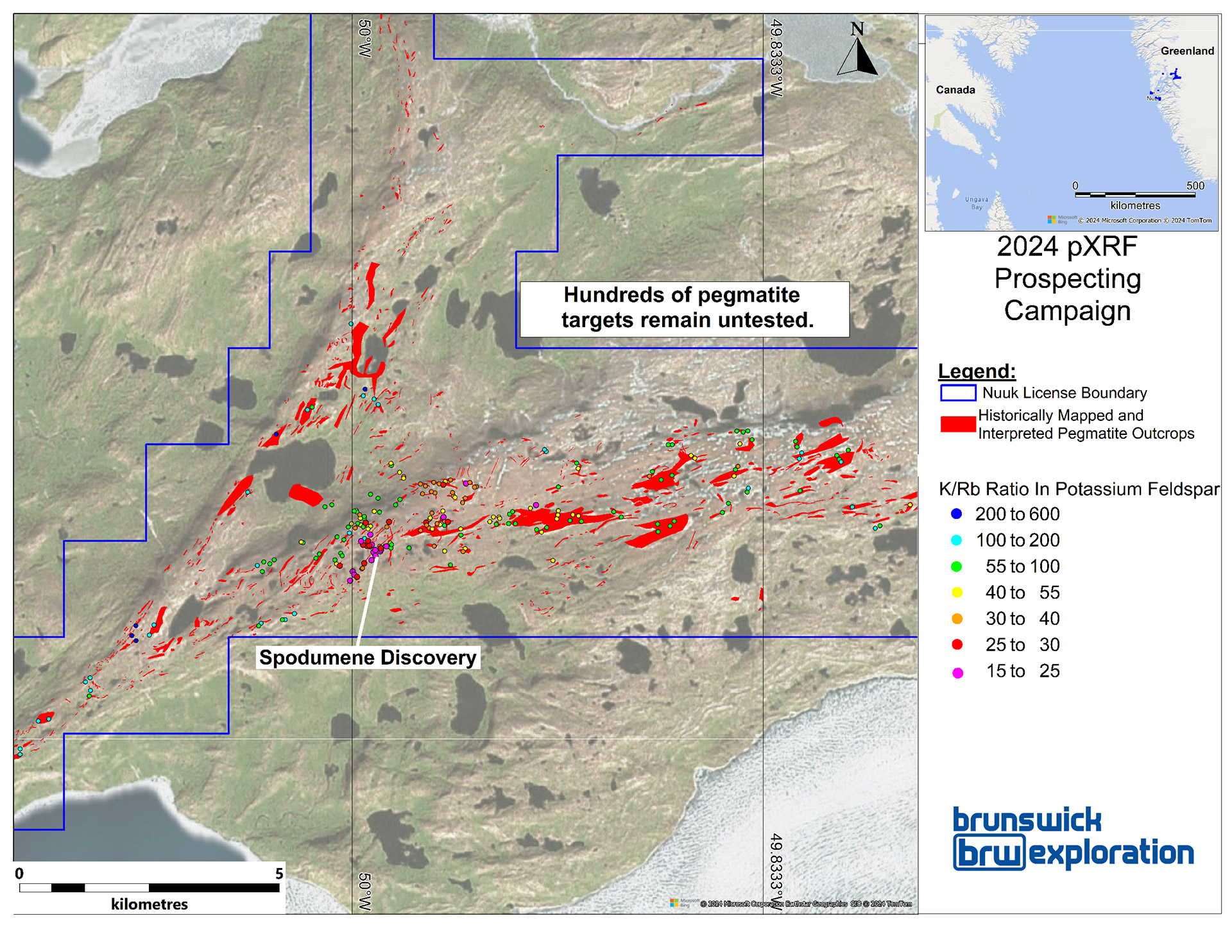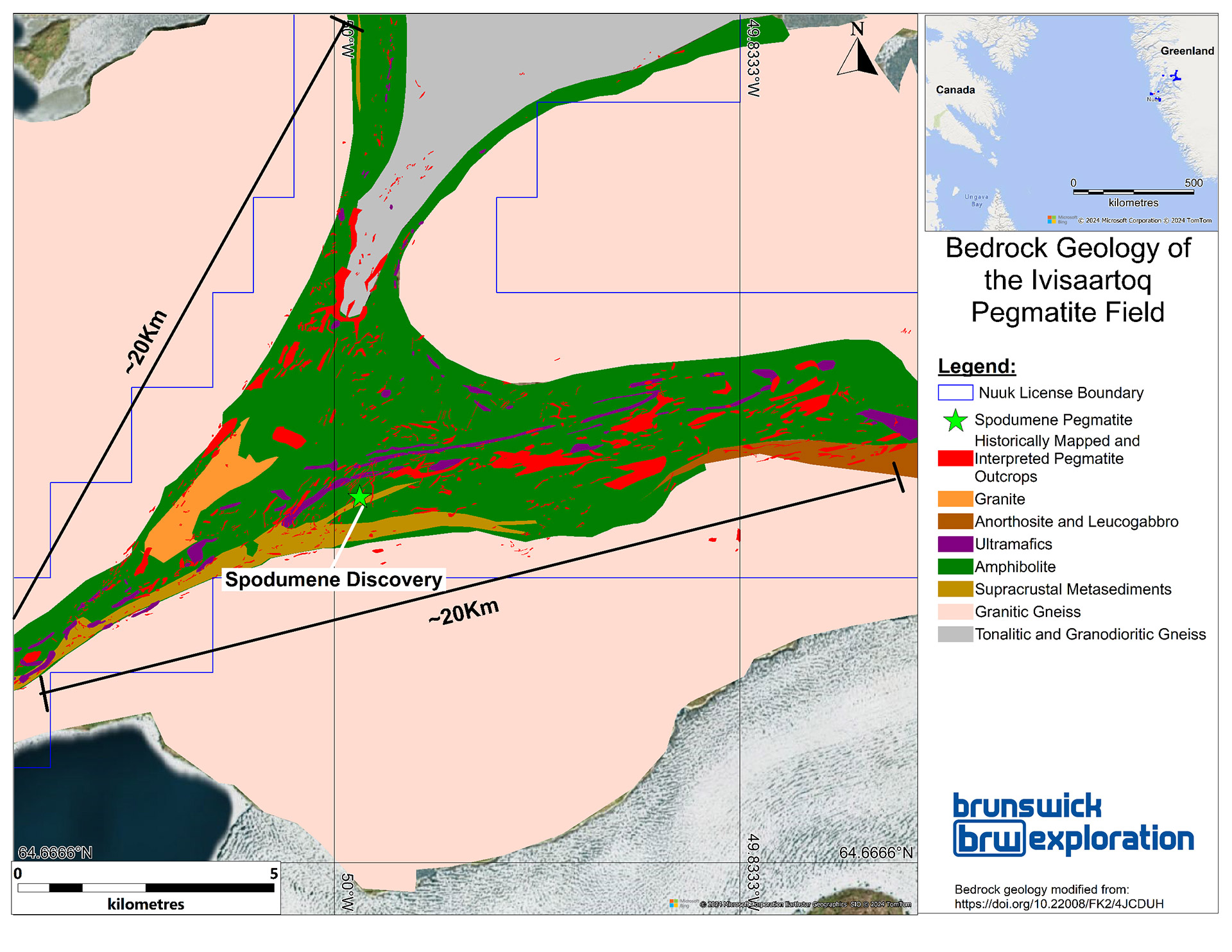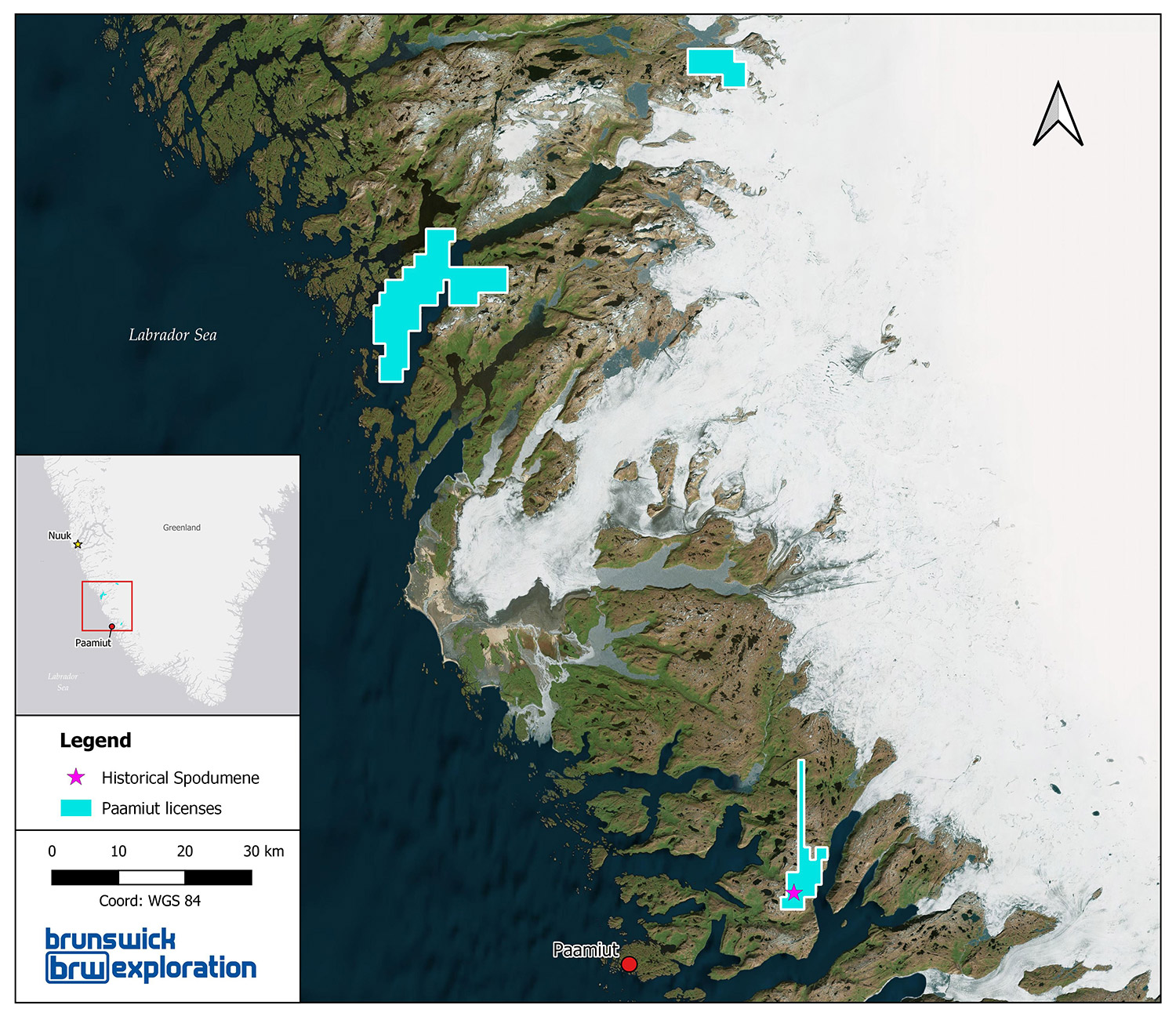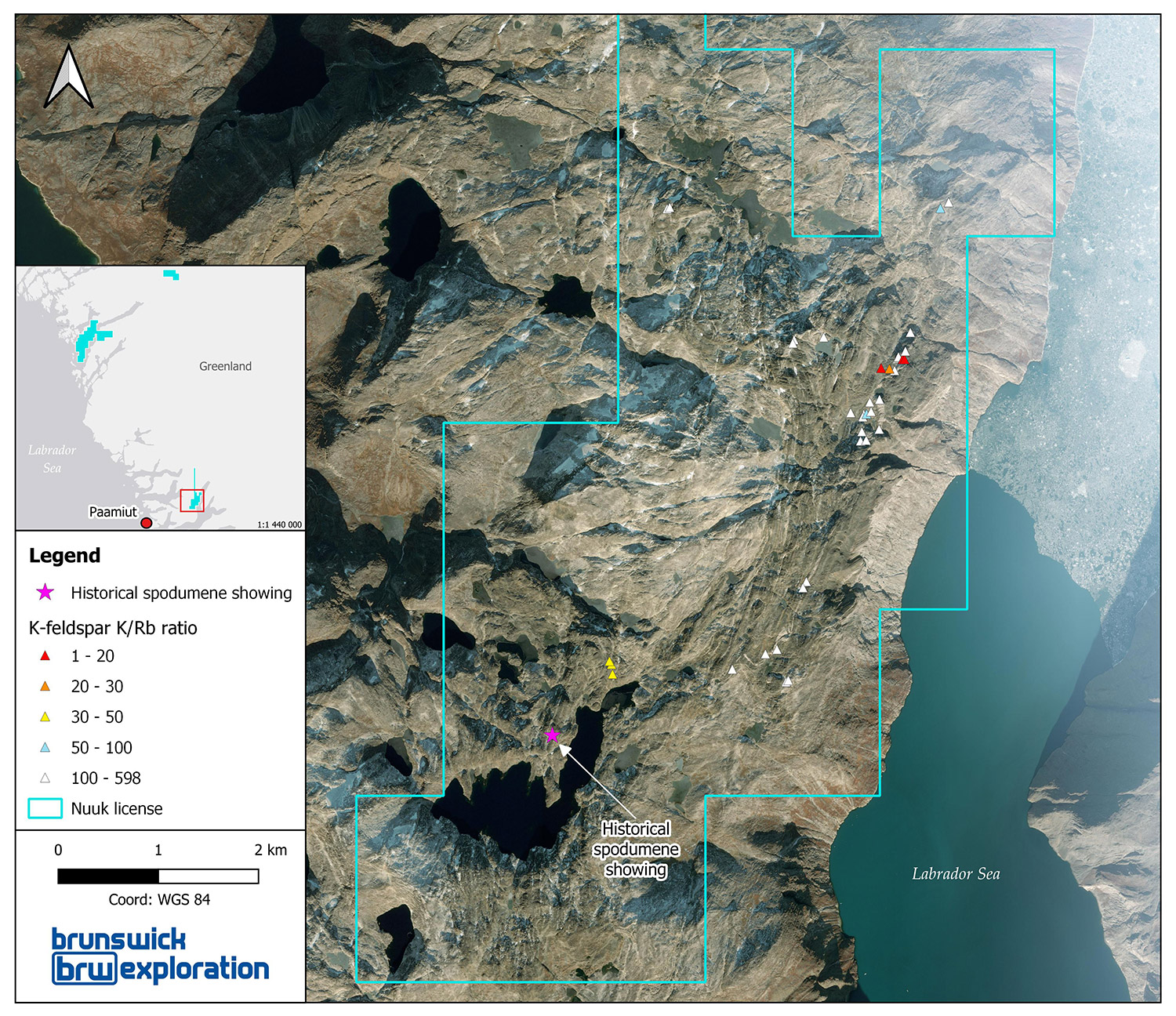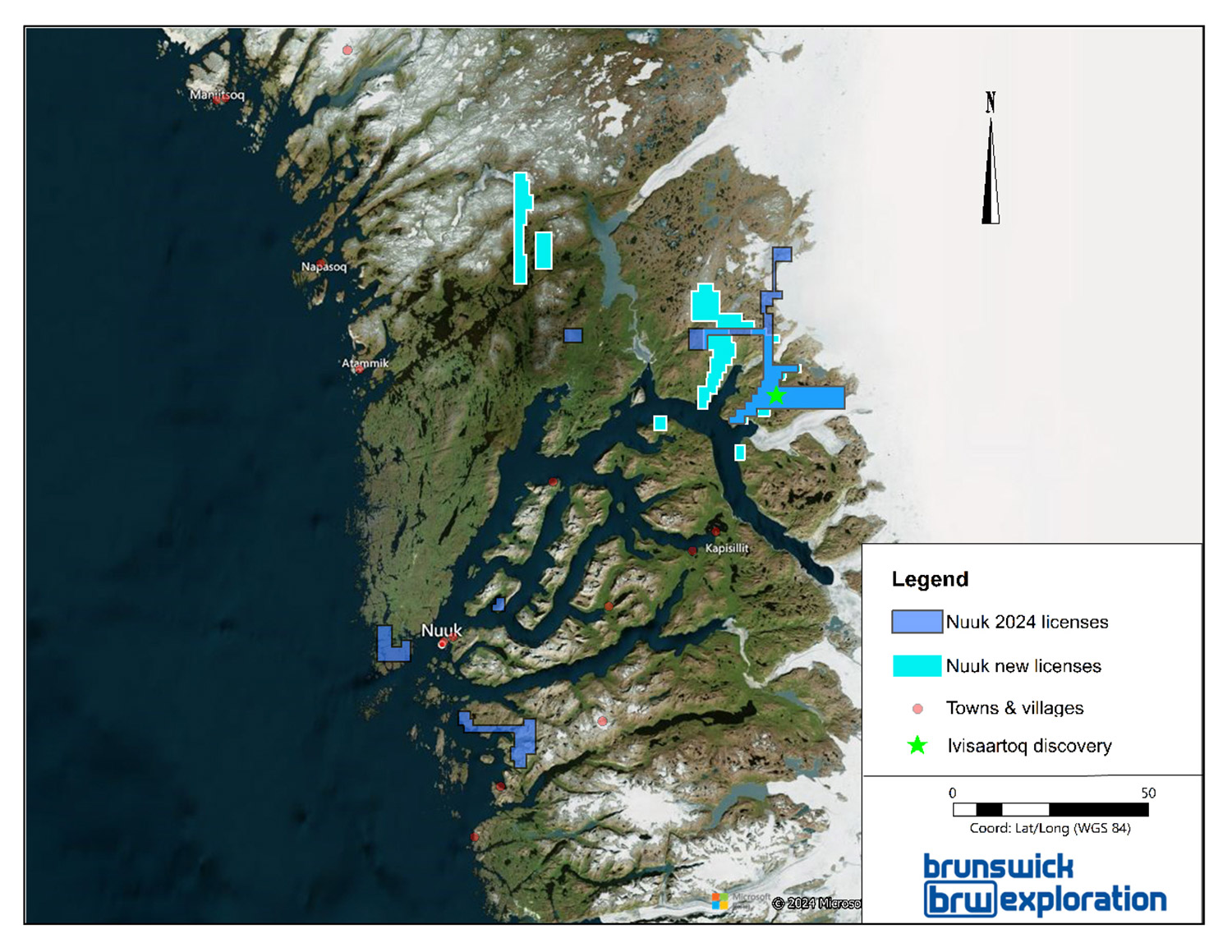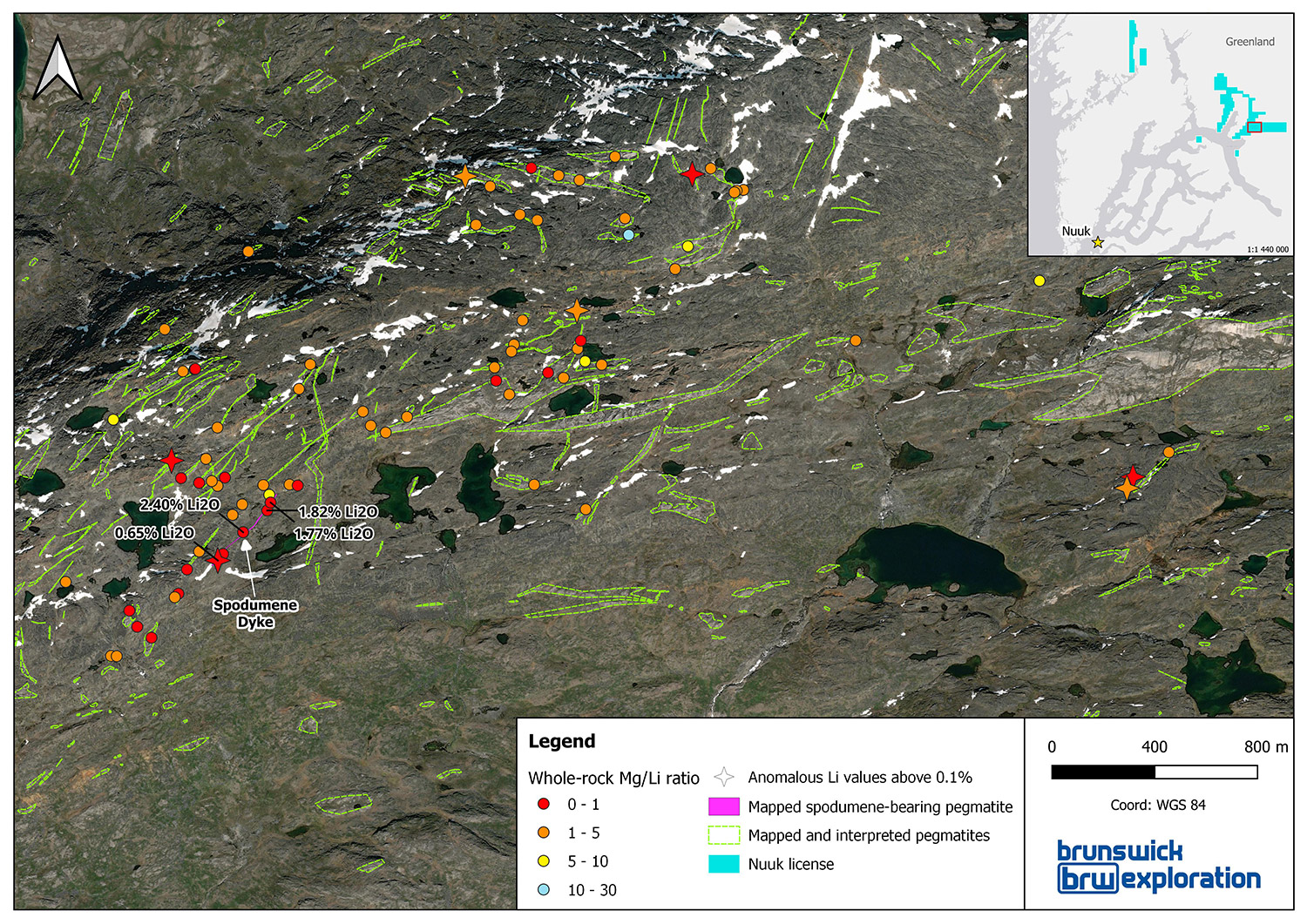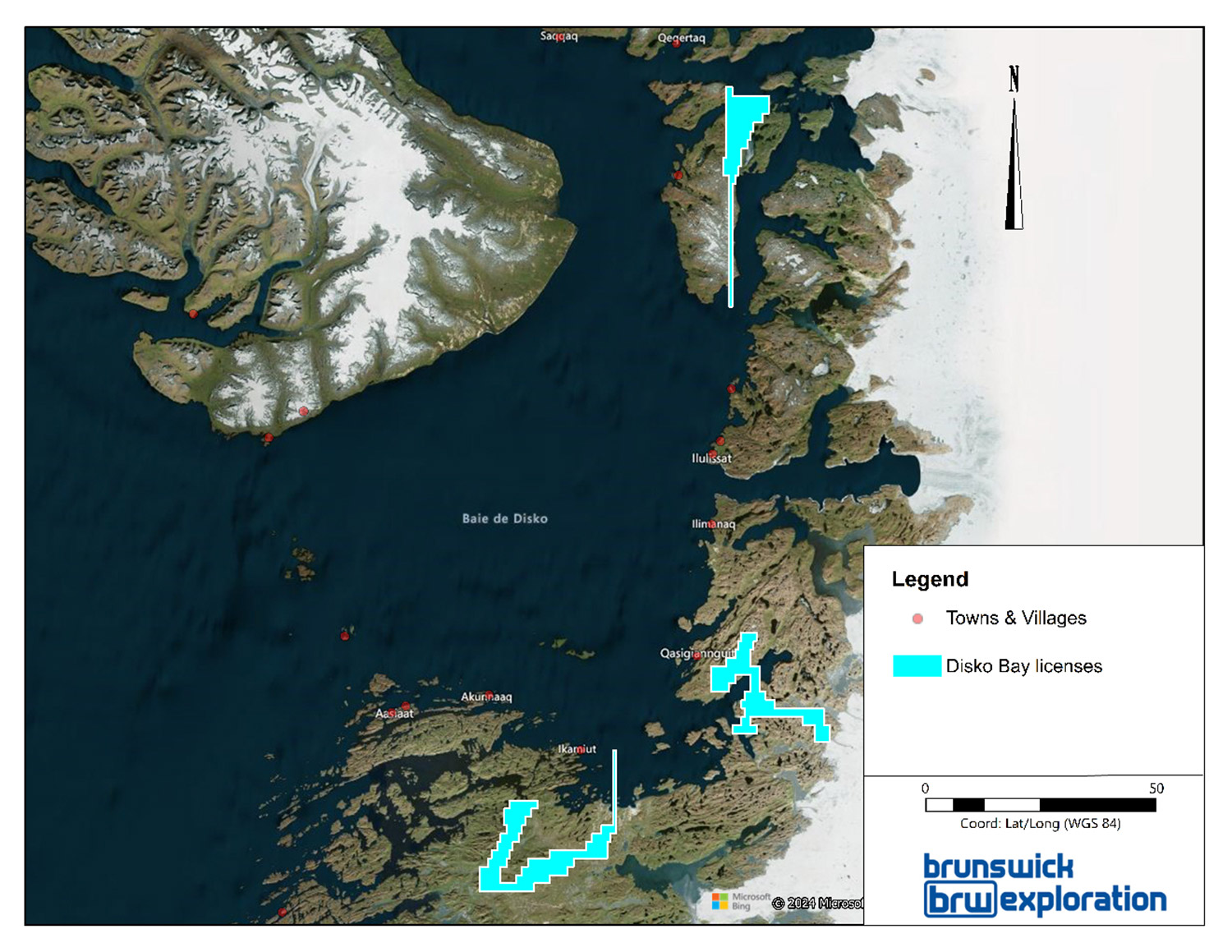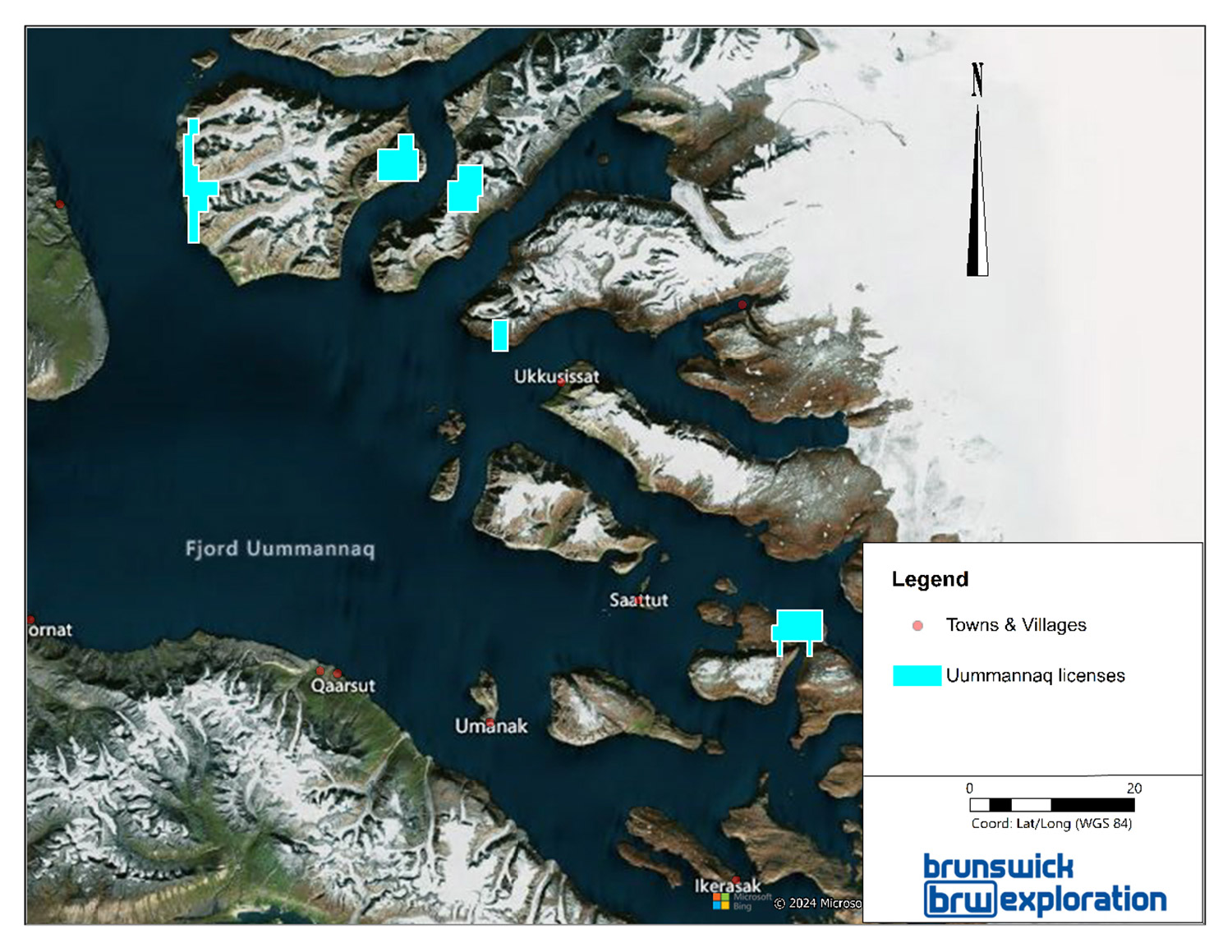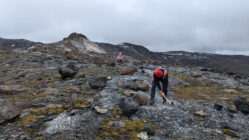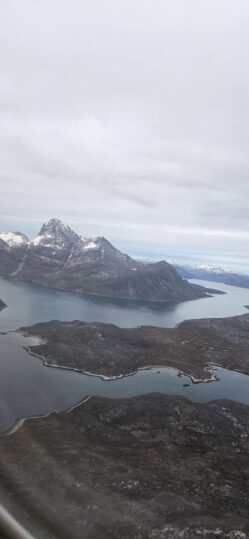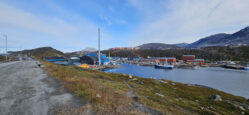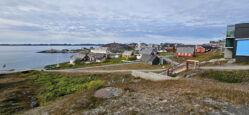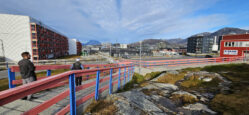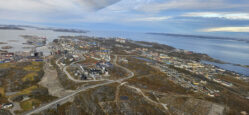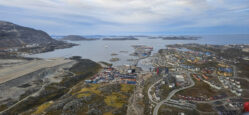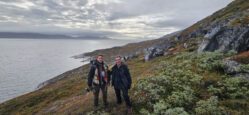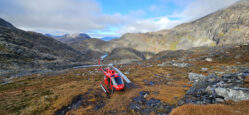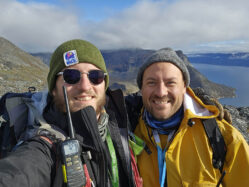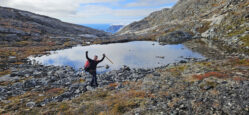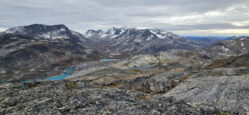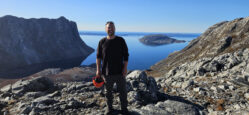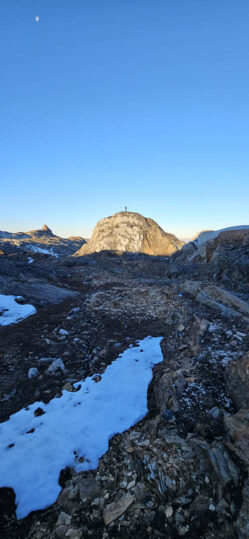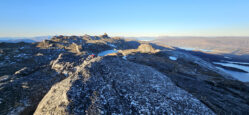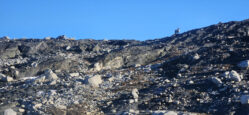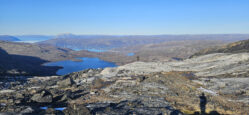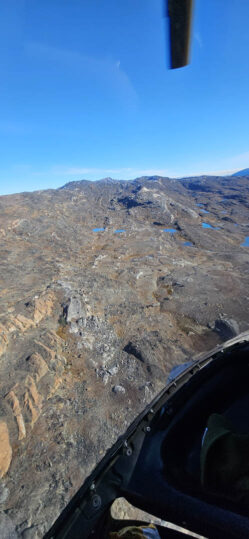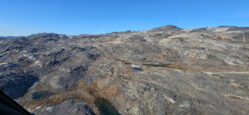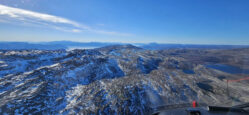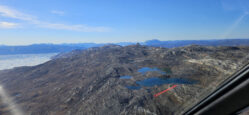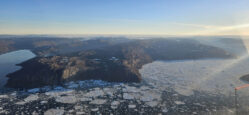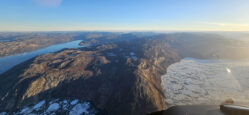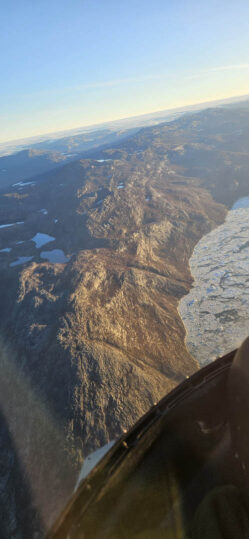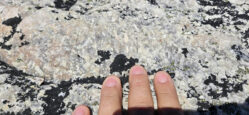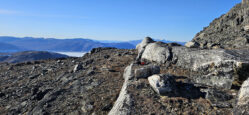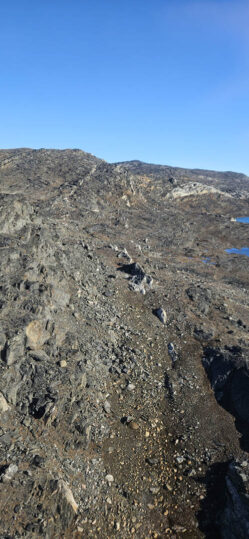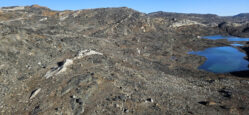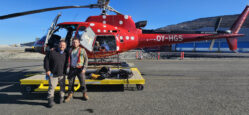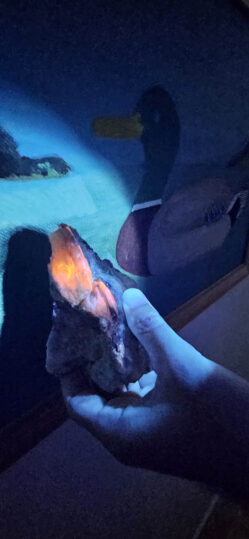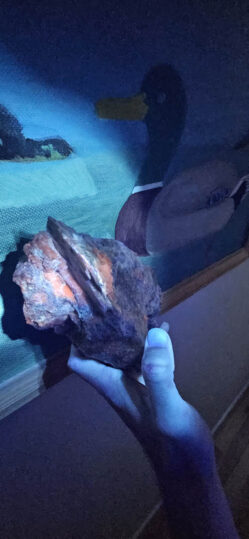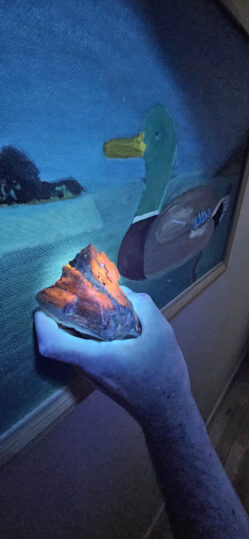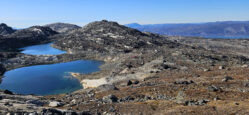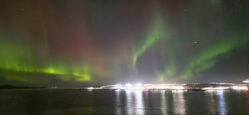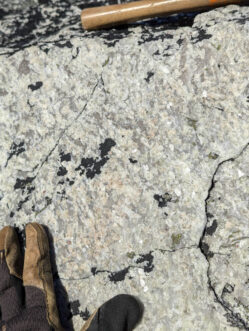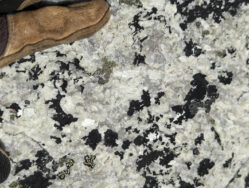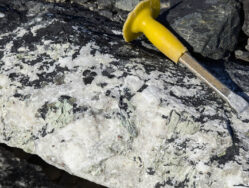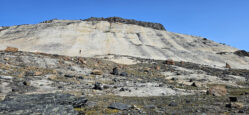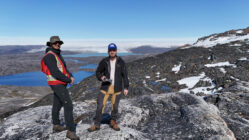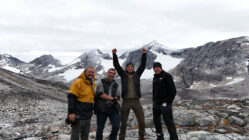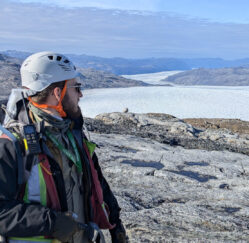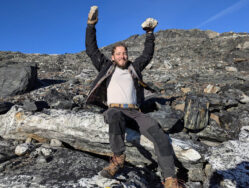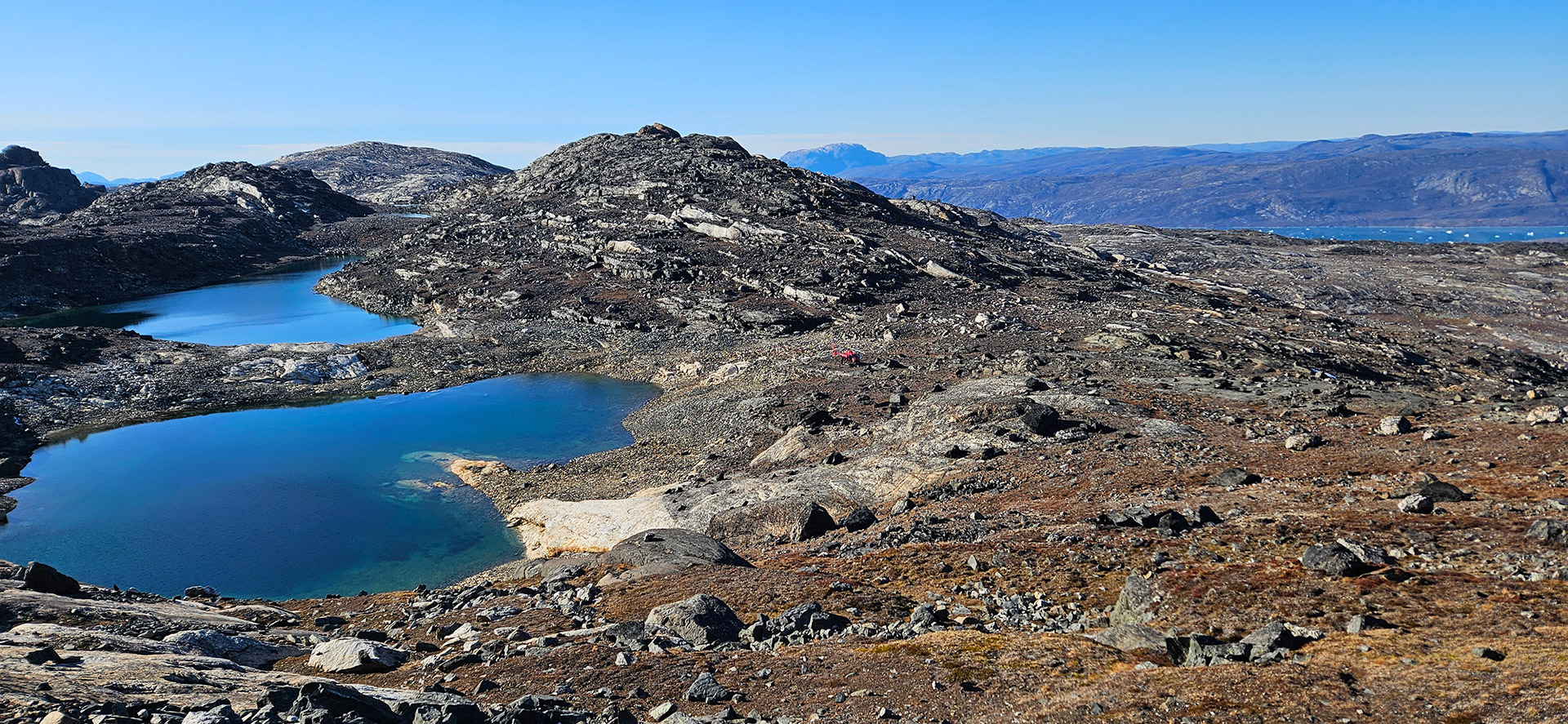
Nuuk License – Ivisaartoq Discovery
The Ivisaartoq pegmatite field is part of the larger Nuuk License, hosted within the Ivisaartoq Greenstone Belt. The trend is located roughly 90 kilometers northeast of Nuuk, the capital of Greenland, on the Western central coast of the country. This area of Greenland is part of the North Atlantic Craton that extends into Nunavut and Labrador. The belt is Mesoarchean in age and contains amphibolites, metasediments, ultramafics, gneisses, gabbros, granites and pegmatites.
The spodumene-bearing dyke was traced and interpreted to be roughly 400 meters with an exposed width of up to 5 meters containing up to 50% centimetric green and white spodumene. The spodumene was confirmed by UV (ultraviolet) light as well as LIBS (“Laser Induced breakdown spectroscopy”). The dyke is open in all directions and is part of a larger evolved dyke field containing numerous pegmatites that are metric to kilometric in scale which remain to be prospected. The Ivisaartoq belt is divided in two distinct trends: the South trend which is roughly three kilometers wide by approximately 20 kilometers long and the North trend which is roughly 1.5 kilometers wide by 20 kilometers long. Work in 2024 was largely limited to the South trend where the discovery dyke is located due to time constraints. However, both the North and South trend require much more prospecting in 2025 as the discovery was made late in the campaign and hundreds of mapped and interpreted pegmatite outcrops remain untested.
First pass prospecting was conducted on all land holdings within the Nuuk license, with the northeastern block containing the most anomalous results. This initial pass identified over 20 pegmatites, all in the Ivisaartoq pegmatite field, with mineralogy and K/Rb ratios, measured in potassium feldspars, that are indicative of a high degree of fractionation. The evolved pegmatites are up to 1,700 meters in strike length. The Company believes there is strong potential to discover more spodumene-bearing pegmatites within these highly evolved pegmatites.
Due to the extensive size of the pegmatite field and time constraints, the team focused on collecting as many pXRF samples as possible. With the rapid exploration success in Greenland, a second phase of prospecting is planned in 2025, as soon as possible, to map all evolved pegmatites from the 2024 program and prospect pegmatites that were not visited to prepare for advanced exploration programs in 2025.
Paamiut License
The Paamiut license is located roughly 250 kilometers south of Nuuk along the coast, near the community of Paamiut. A limited, first pass prospecting campaign was completed in September. Following initial work, the company increased its license area to include a greenstone belt measuring roughly 10 kilometers long by two kilometers wide that hosts an unvisited historical spodumene showing with a reported assay 1.23% Li2O. The initial BRW work generated several pegmatite samples that had evolved K/Rb ratios of less than 30 in potassium feldspars within two dykes. The two evolved pegmatite dykes contained beryl and tourmaline and are approximately 170 meters long by five meters wide.
In addition, new licences were staked roughly 90 to 130 km from the coastal town of Paamiut, which is approximately 260 km south of the capital Nuuk. Paamiut is home to roughly 1,300 people. The new license area lies within the North Atlantic Craton specifically within the Bjornesund tectonic block. This block is composed of tonalitic and granodioritic orthogneiss as well as favourable Mesoarchean metavolcanic amphibolite belts. The North Atlantic Craton extends westwards into northern Labrador, Canada and eastwards into eastern Greenland. Multiple metavolcanic amphibolite belts were acquired that are up to roughly 1.5 kilometers in width and 15 kilometers in strike length. The new claims have numerous mapped and interpreted pegmatite targets including nine that are between 500 and 900 meters in strike length for a total new license area of 20,785 hectares. Licences applications have been submitted and are awaiting government final approval.
Jurisdiction of Greenland
While much of Greenland is geologically contained within the North Atlantic Craton, it is an autonomous country that is geopolitically linked to the European Union, via Denmark. The EU has adopted the ambitious European Green Deal and is investing substantial capital in initiatives such as the Critical Raw Materials Act and Horizon Europe. This September, Nuuk hosted the first EU-Greenland Business Mission on Critical Raw Materials and Renewable Energy, solidifying its commitment towards critical minerals. Greenland has past and current mining operations and has applications for proposed mines in progress. The EU also opened an office in Nuuk earlier this year after the November 2023 memorandum of understanding and strategic partnership with Greenland was announced to develop sustainable raw minerals value chains to support Greenland and the EU. (see https://ec.europa.eu/commission/presscorner/detail/en/ip_23_6166).
Nuuk Expansion
The Nuuk holdings host the new Ivisaartoq discovery within the Ivisaartoq belt (see press release October 29th). The Company has applied to stake the adjacent Ujarassuit amphibolite belt that is up to 1 kilometer in width and roughly 40 kilometers in strike length. In addition, the company has staked additional amphibolite belts within the Fiskefjord Complex, 95 kilometers north of Nuuk, and 75 kilometers southeast of the community of Maniitsoq. These belts are up to 4.5 kilometers in width and 20 kilometers in strike length. In total, the new claims contain hundreds of mapped and interpreted pegmatite bodies including 6 that are between 500 and 2,000 meters in strike length for a total license expansion area of 33,138 hectares.
Disko Bay
The Disko Bay licenses are located roughly 30-80 kilometers from the coastal city of Ilulissat, which is the 3rd largest city in Greenland. The licenses are near multiple seaports and container terminals, including Ilulissat, which has a population of over 4,500 people. The area is situated within the Aasiaat domain, part of the Paleoproterozoic Nagssugtoqidian Orogen, sandwiched to the south by the Archean North Atlantic Craton and to the North by the Archean Rae Craton. The Orogen extends west into the Trans-Hudson orogeny of Canada that continues to the lithium deposits near Snow Lake Manitoba and the Black Hills of South Dakota and extends east towards Eastern Greenland and has been interpreted to continue to Scotland and Scandinavia. Multiple amphibolite and metasedimentary belts were acquired that are up to roughly 4 kilometers in width and 20 kilometers in strike length. The new claims have hundreds of mapped and interpreted pegmatite targets including 54 that are between 500 and 2000 meters in strike length for a total license area of 49,639 hectares.
Uummannaq
The licenses are located roughly 30 – 70 kilometers from the coastal city of Uummannaq, which is roughly 80 kilometers north of Ilulissat. Uummannaq has a population of roughly 1,660 people , an airport and a ferry terminal as well as a nearby container terminal . The area is located within the Archean Rae Craton that is intermixed with the Paleoproterozoic Rinkian fold-thrust belt, both of which are in contact with the Paleoproterozoic Nagssugtoqidian Orogen to the south. The Rae Craton extends west into Nunavut, NWT, Saskatchewan and Alberta, and extends eastward into eastern Greenland. Multiple amphibolite and metasedimentary belts were acquired that are up to roughly 2 kilometers in width and 15 kilometers in strike length. The new license contains tens of mapped and interpreted pegmatites of which 30 are between 500 and 2000 meters in strike length with a total license area of 9,770 hectares.

